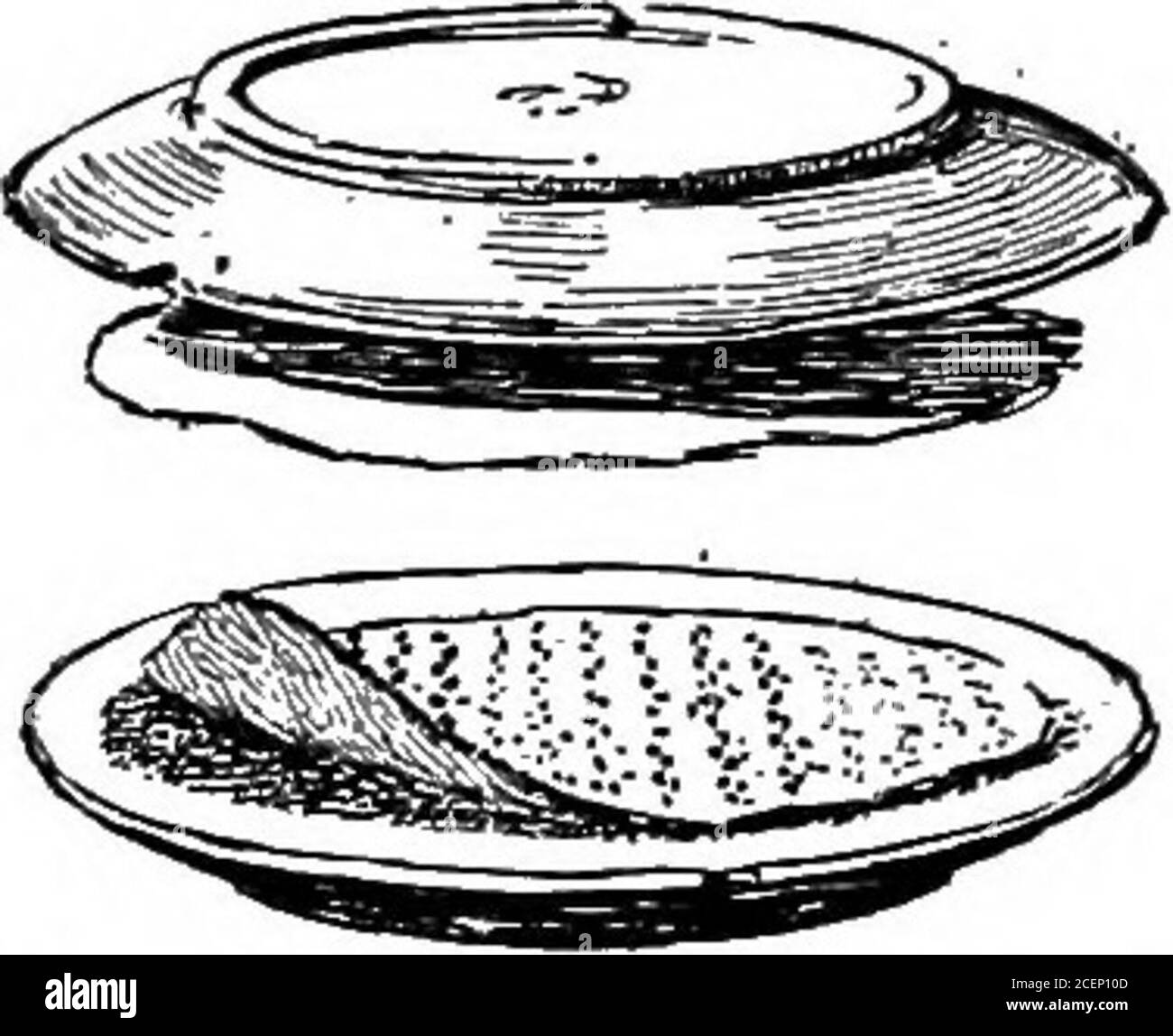. Agriculture for southern schools. ad, straightens its back, and if the seed-coat adheres, pushes it off by the growth of the bud. On the other hand, the garden orEnglish pea keeps its two seed-leaves underground(Fig. 25), because the part of its stem that grows rapidly isthe part above the seed-leaves and between them and thebud. The young pea stem also humps its back and pulls itsreal leaves out of the soil backward. The seed-leaves of all these plants, whether comingabove ground like those of beans, cowpeas, squash, andcotton, or remaining in the soil, serve to feed the youngplant before i

Image details
Contributor:
Reading Room 2020 / Alamy Stock PhotoImage ID:
2CEP10DFile size:
7.1 MB (259.2 KB Compressed download)Releases:
Model - no | Property - noDo I need a release?Dimensions:
1752 x 1426 px | 29.7 x 24.1 cm | 11.7 x 9.5 inches | 150dpiMore information:
This image is a public domain image, which means either that copyright has expired in the image or the copyright holder has waived their copyright. Alamy charges you a fee for access to the high resolution copy of the image.
This image could have imperfections as it’s either historical or reportage.
. Agriculture for southern schools. ad, straightens its back, and if the seed-coat adheres, pushes it off by the growth of the bud. On the other hand, the garden orEnglish pea keeps its two seed-leaves underground(Fig. 25), because the part of its stem that grows rapidly isthe part above the seed-leaves and between them and thebud. The young pea stem also humps its back and pulls itsreal leaves out of the soil backward. The seed-leaves of all these plants, whether comingabove ground like those of beans, cowpeas, squash, andcotton, or remaining in the soil, serve to feed the youngplant before its own roots and leaves can support it.At first these seed-leaves are thick, but as the food inthese pantries is given to the growing plant, the seed-leaves shrivel and finally disappear. Since these seed-leaves have to do a very different work from that doneby the later or true leaves, they naturally look verydifferent. Large seeds. — The largest seeds usually make a quicker, stronger growth and a larger yield than small or light. 26 AGRICULTURE seeds. It is best, therefore, to separate the largest seedsfrom the others by using sieves or screens. Testing the germination of seeds. — Seeds of someplants lose the power to germinate after they are a year ortwo old; others are good when a number of years old. If seeds become moist and go through a heat, theylose their power to germinate. Children can often helptheir parents by testing the field orgarden seeds they expect to plant inorder to discover what percentage ofthem can grow. All that is neededis a plate; a piece of thick, clean, dark cloth, to be dampened andFig. 24-—a Home-made spread on the plate; a similar pieceto be dampened and used as a coverfor the seeds; and a second plate to place over it all(Fig. 24). Keep this home-made seed tester in a warmroom. Examine the seed on the fifth and eighth days, andas much oftener as you wish. Exercise. — With a sharp knife, cut through grains of corn that aresoft and dented an